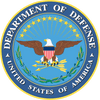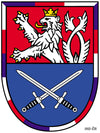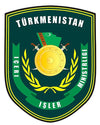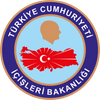Important Note: This item cannot be purchased by anyone who has a violent felony conviction, cannot be shipped to any address in Connecticut or New York, and cannot be shipped internationally (US only).
Key Features of MIRA Tactical Level 4 NIJ Side Plates
MIRA Safety's Level 4 NIJ Side Plates offers ultimate defense against high-caliber, armor-piercing rounds.
-
Stops armor-piercing rounds.
-
Advanced composite materials for superior strength and durability
-
Ergonomic for enhanced mobility
- Assembled in the USA with domestic and foreign components
The ceramic Alumina Oxide Ceramic (AI203) and UHMWPE undergo rigorous inspection to ensure they meet our strict requirements and standards. These materials are carefully bound together in our Phoenix, AZ facility using our proprietary binding agent featuring our advanced RDT (Round Dispersion Technology) sealant. Finally, the plates are wrapped with a high-density 600D water-resistant Nylon liner.
Our Ballistic PE Specs
Continuous unidirectional (UD) fabric is manufactured with an Ultra-High Molecular Weight Polyethylene fiber based on composite laminate. A roll of fabric consists of double-two fibers of unidirectional sheet cross piled at 90 degrees to each other, with a special adhesive rubber and glue film. The UD fabric has high strength and high modulus, and is resistant to corrosion, acid, alkali, UV light, and moisture.
Therefore, it can be widely applied to bulletproof products, ballistic and anti-stab products, ballistic armor plates, etc.
We test our products to the NIJ Standard 0101.6 and beyond. This includes the following:
Ref Sec. 6 Hard Armor Conditioning Protocol
Purpose and Scope: This section is designed to subject hard armors or plate inserts to conditions that are intended to provide some indication of armor’s ability to maintain ballistic performance after being exposed to conditions of heat, moisture, and mechanical wear. This protocol is intended to apply only to rigid systems. After this armor conditioning protocol, the ballistic performance will be verified with ballistic testing as described in section 7.
(1) a 24-h acclimation period to ensure all items at any intended climatic test location will start with the same conditions,
(2) a 10-d uniform thermal exposure,
(3) a thermal cycle exposure, and
(4) mechanical durability testing.
Ref Sec.7 Ballistic Test Methods
Purpose and Scope: This section specifies the methods and performance requirements for ballistic testing of body armor and includes the formal test procedures for the Perforation Backface Signature (PBFS)and baseline Ballistic Limit (BL) tests. The first test series is P-BFS testing and requires the armor to demonstrate consistent ballistic resistance to both perforation and excessive blunt force trauma. The second test series is BL testing and is designed to statistically estimate perforation performance. In addition, for flexible vests and jackets, a portion of the sample set will be subjected to the flexible armor conditioning protocol described in section 5. For hard armor and plate inserts, the entire sample set will be subjected to the hard armor conditioning protocol described in section 6. The conditioned samples will be subjected to ballistic testing.
Why Choose MIRA Safety Level 4 NIJ Side Plates?
-
Innovative design: Lightweight yet durable, using cutting-edge materials
-
Versatility: Suitable for law enforcement, military, and security personnel
- Enhanced mobility: Ergonomic design maintains tactical maneuverability without compromising protection
- Superior threat protection: Defeats armor-piercing rounds that penetrate lower NIJ levels
- Quality assurance: Materials undergo strict inspection before assembly in Phoenix, AZ facility





















